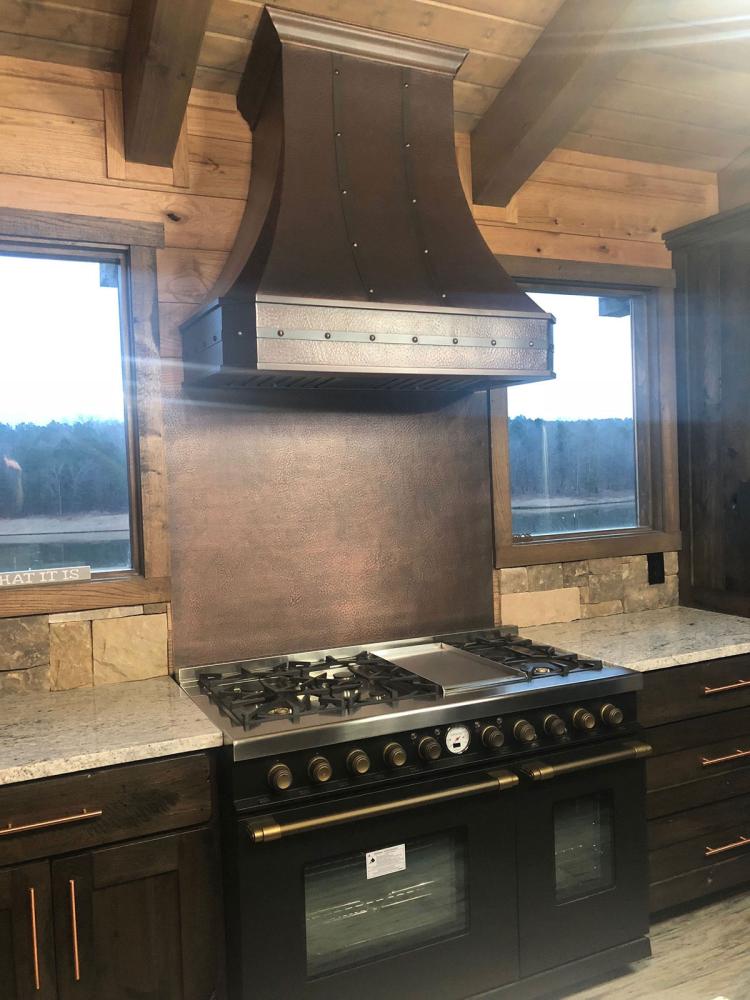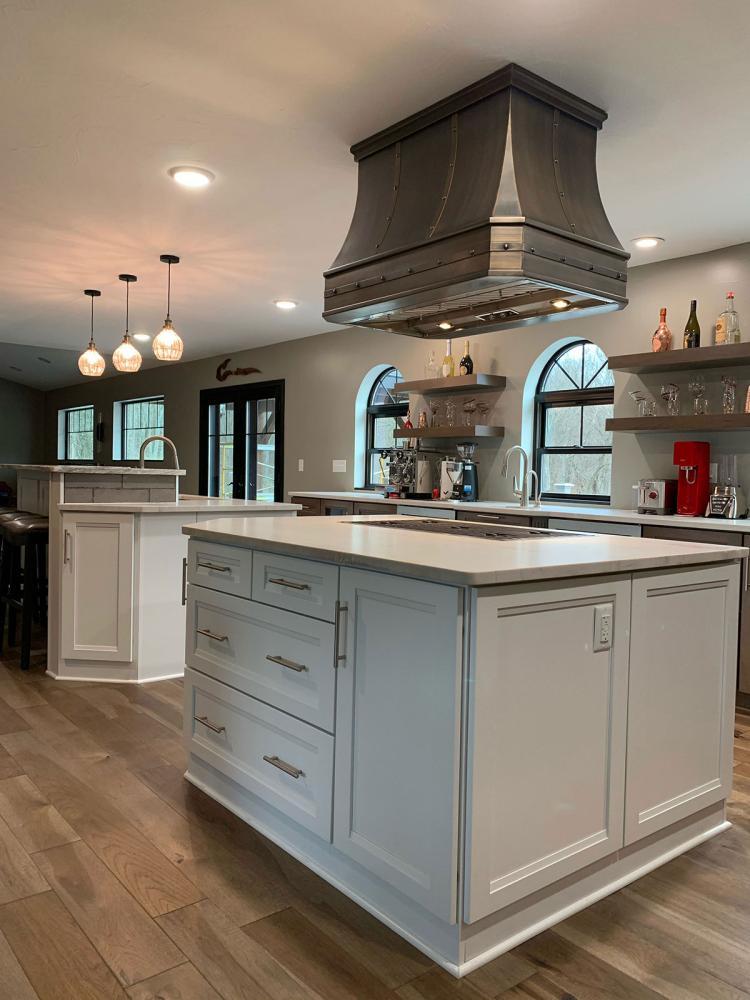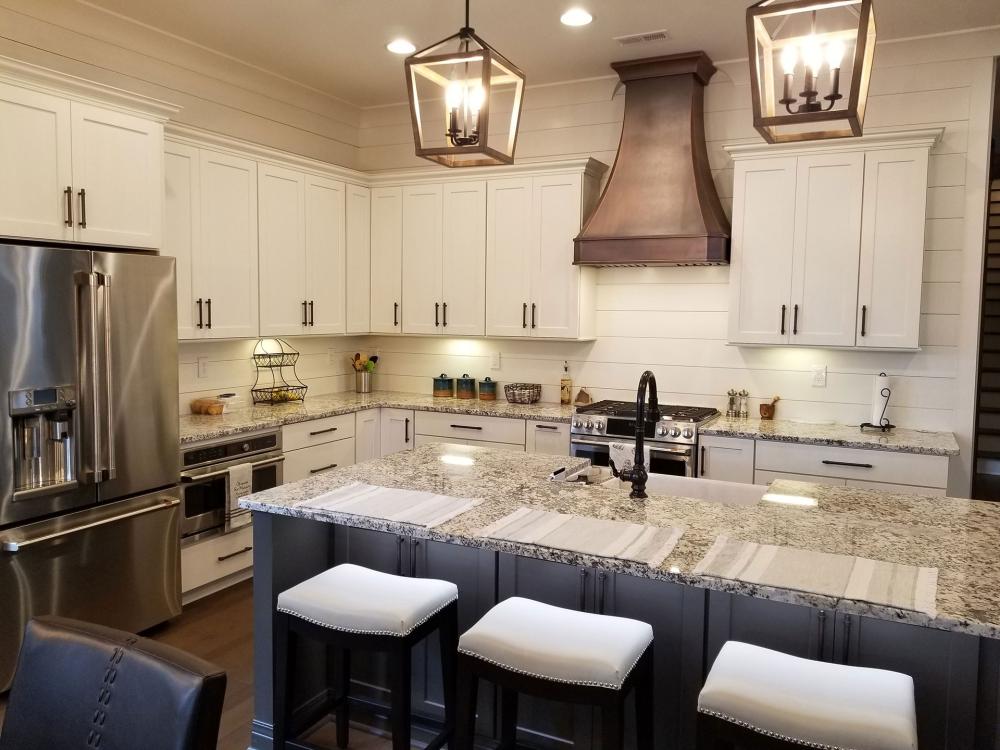If you’re renovating your kitchen, you might have heard of the term “make-up air”, which initially sounds quite odd. What is make-up air, and why is it important? Some kitchens might not need make-up air, some kitchens might need it without renovations - there are a number of reasons your kitchen might need it, so it’s important that you take them into consideration if you’re planning on installing something like a range hood. It varies from kitchen to kitchen and depends very much on how you’ve got things laid out. It’s not just about preference, either, it’s often building code that you have to follow for your kitchen to be considered safe.
What is make-up air?
Before you can learn about when you might need make-up air in your kitchen, you should first learn about what it actually is. The idea of it is to make up for air that your kitchen might be lacking, and there are a number of reasons that might happen. Either way, if your kitchen is lacking in air, it’s an unsafe environment, and not fit for use. Make-up air is transferred into your kitchen through make-up air ventilation. These kits can come in different shapes and sizes, and they’re not just basic regular vents. The air is tempered, which can either be heated or cooled to make sure your kitchen gets the air that it needs from the outside.
How are these ventilations installed?
Make-up air vents aren’t simple to install, and it’s certainly not a DIY job that you’re going to be able to take on over the weekend. Instead, they require a hole to be made in your wall, to provide the vent access to outside air. Of course, your kitchen won’t need this air vent to be open all of the time, as that would be similar to having a window open - which is not ideal in cold weather. Instead of leaving your home open to outside temperatures, these vents have a motorized damper in them, which keeps them closed until they’re needed.
In most cases, these motorized dampers are connected to the same switch that you would use when you activate your range hood. That way, when the range hood is venting air out of your kitchen, the make-up air vent will compensate for that air at the same time. You’re not wasting electricity, and the temperature in your home is being properly regulated.
Why is make-up air important?
It’s not just about the air being thin in your home, it’s about how safe the air in your home is to breathe. Installing a range hood in your home, or having very poor ventilation can lead to an increased level of carbon monoxide in your living space. Carbon monoxide is quite dangerous to breathe in and can cause severe, lasting damage to those who breathe it in for extended periods of time.
If you want to make sure you’re using your kitchen range hood safely, then it’s important that you’re considering what kind of ventilation is necessary. As mentioned before, this can vary from kitchen to kitchen, and it’s not necessary to install it if your kitchen has proper ventilation. Generally, it mostly applies to smaller kitchens, with a lack of ventilation overall.
In the best-case scenario, without make-up air, your home will have negative air pressure - which can be bad for multiple reasons. Negative air pressure tends to create a much dryer atmosphere and can be quite uncomfortable. You may experience chapped lips, nose bleeds, or more static electricity.
Your range hood will also seem as if it’s performing worse than usual, as it has more trouble transferring air outside when there’s much less of it. You have to keep in mind that your range hood isn’t the only appliance that’s removing air from your kitchen, but your gas stove, too. Having make-up air can prevent such difficulties in your home, and if you’re experiencing those issues - it could be a sign that your range hood is too demanding for your living space, and you need make-up air ventilation.
Who needs make-up air?
So it was already mentioned that it can vary from case to case, but who is likely to need make-up air in their kitchen? Here are a few conditions that you’ll want to look out for when you’re concerned about the air in your kitchen.
Homes with a small kitchen space
Having a small kitchen can be great, especially if you’re happy with it - everything is within reach at all times, and you never lose anything. With that said, there are a few downsides that you’ll experience as a result of having a small kitchen.
Small rooms will typically need a lot of ventilation if they’re going to be safe to cook in, the smoke and fumes from what you’re cooking can be dangerous - and this is often remedied through the use of a range hood. Range hoods are a great way to keep your kitchen air clean and fresh, but that’s only so effective in a small kitchen. The problem is, range hoods come in varying strengths, and there’s a chance that you’re ventilating more air than what your kitchen has access to. So while the fumes are leaving your kitchen, so is all of the breathable air that you need.
This can happen if your range hood is too powerful for your current airflow to keep up with, or if you tend to keep your range hood active for long periods at a time. Overall, if you’re living in a small kitchen, you should consider whether or not make-up air is necessary.
Kitchens with strong range hoods
No matter the size of your kitchen, it’s not always enough if the range hood is stronger than the airflow you have. Bigger kitchens that see a lot of use, may even have bigger ovens - which will need a range hood with comparable size and strength to match it. If it’s going to effectively collect all of the fumes, odors, and grease then it needs to be that size, there’s simply no avoiding that. However, if you’re going to have that in your kitchen, then you need to be aware of the dangers it brings.
Even so, if your kitchen does have good ventilation already, and is a large space, generally you wouldn’t need to worry. It’s mostly for spaces that don’t have great ventilation - which is becoming more common due to modern insulation solutions. Older constructions typically allow for more ventilation through insulation, but with things like spray foam insulation, homes are a lot more air-tight.
The way you would measure whether or not your range hood is too powerful for your kitchen would be based on the CFM that your hood is rated in. As CFM is short for cubic feet per minute, that’s how much air your hood is going to be removing from your kitchen. Of course, your kitchen needs the size to match the power, and a 1000 CFM power range hood is going to be far too much for a small kitchen to handle.
Long-use periods of range hoods
Sometimes it’s not a concern of what kind of kitchen space you have, or even the power of your range hood, but how long you’re planning to use it. If you’re going to be cooking all day, and you’ve got your range good on the whole time, then you’ll likely need some extra ventilation to bring in fresh air.
So even if you’ve got a big, open space, or a well-ventilated kitchen, it’s worth considering that long-time use of your range hood generally isn’t recommended. You should allow time for the air in your kitchen to be replaced every now and then, which could mean taking a few minutes break in between use of your range hood. How often you need to take these breaks will again depend on how well-ventilated your kitchen is, and it’s generally not something you’ll need to be concerned about for your average cooking session.
Sometimes ventilation isn’t enough
If you’re reading this and thinking that as your home has ventilation, it should be able to accommodate any kind of range hood - you might be wrong. A regular ventilation system isn’t necessarily the same as make-up air, and you may find that a regular air vent isn’t enough to compensate for the amount of air that a range hood draws out.
It’s important to know that a make-up air system is different, and may need to be installed alongside any other ventilation you might have if the power of your range hood requires it.
Have your kitchen assessed
It’s not always easy to tell whether or not your kitchen meets the make-up air requirements, and you don’t want to spend out on a range hood only to find that your kitchen is lacking the ventilation it needs. Instead of leaving that to chance, you should consider having your kitchen assessed. Regulations change over the years, and it may now be necessary for your kitchen to have some kind of make-up air for your range hood installed. It’s all very well drawing your own conclusion, but it’s generally left to a professional to determine whether or not your kitchen is safe. You should never leave a safety issue to chance, especially when it involves increased carbon monoxide risks.
Not only does it help to potentially save you time and money, but you can spend time in your kitchen with the peace of mind knowing that your kitchen is safe, and everything is as it should be. You’ll want to find out this information before you’ve invested in your range hood, as it might affect how you want to install it. As not only will you need a space to ventilate your range hood, but you’ll also need a space for your make-up air ventilation, too.
If you’re having trouble deciding where the best place is for your make-up air vent, an expert might be able to help you with that, to ensure you get the optimum position when it’s installed.
Potential savings
Something you might be concerned about when installing a make-up air vent is that you’re going to pay for the extra work - however, there are potential savings to be made here. If you have negative air pressure in your home, it not only affects the quality of the air but can also make it more difficult to regulate the temperature in your home. You’ll be spending more on air conditioning, as negative air pressure may draw in warm air from the outside.
There’s also the fact that it can impact your appliances, and appliances like your range hood may struggle - and as a result wear faster than they usually would. It might not be a huge difference, but if you compare the costs of a replacement appliance to installing a make-up air vent, it’s not so much of a big deal.
Configure your kitchen
Once you know what you want for your kitchen, you’re ready to start looking at products. Finding the right product is often difficult, which is why it’s important that the customer gets to decide how their product looks, and what kind of configuration they’re going to get. If you want something that’s made for your kitchen, you can make use of the site’s 3-D configurator located on each product page.
With the configurator, you can set up your range hood exactly how you want it, so it will fit your kitchen no matter how complex the design is. From the size to the trim to the finish - it’s all changeable based on what you want. Once you’re done designing it to fit your home perfectly, you can get a quote on that product specifically, with no obligation to complete the purchase. It’s simple to use, and it makes the product much easier to visualize.





